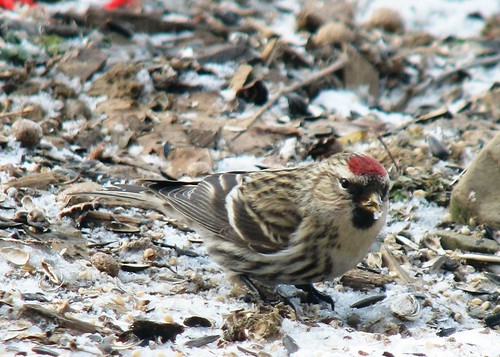Even the birds are having problems in 2020, but it’s the kind of problem that people who feed birds are loving. Birds that are rarely seen in the United States are flying south in record numbers. People with birdfeeders are seeing some interesting birds show up at their feeders that they haven’t seen in years. This sporadic migration of large flocks is called an irruption.
The main reason the birds irrupt is a lack of food where they live in Canada. Ornithologist Ron Pittaway has been putting together a winter finch forecast that looks at the food sources for the birds in the north to predict whether or not they will move south.
According to Audubon magazine, “Pittaway sends a survey in the late summer to his contacts —an average of 45 indispensable volunteers per forecast, he reckons — asking them to rate the seed crops of trees like pines, spruces, hemlocks, and mountain ashes as poor, fair, good, excellent, or bumper.” He then uses that data to predict whether or not the birds will need to migrate to find food. Pittaway retired last year, but a new ornithologist, Tyler Hoar, has taken over the forecast.
I first heard about this local irruption on Facebook. Reports of odd birds started popping up in nature -oriented groups to the north of us. Soon, people were reporting odd birds to the east and west. It wasn’t long before they showed up in my yard.
The first to arrive were the Pine Siskins. These tiny birds look like stripy, olive-colored goldfinches and swarmed my thistle feeder a couple of weeks ago. These birds prefer to eat black nyjer seed. These tiny, oily seeds are often called thistle seeds, but are no relation to thistle. Finches of all sorts love these seeds.
Nyjer seeds are so small that I put mine in a special feeder with small holes that hangs in the backyard. The feeder hangs next to the Cut-leaved Coneflower. I don’t deadhead this eight-foot-high flower and the finches float from the old seed-heads to the feeder happily. My hope is that other odd finches that are migrating will find it. More on that later.
The big news in my yard was the Evening Grosbeaks, which look either sort of like a goldfinch on steroids or a mutant cross between a cardinal and a goldfinch. The headlines read that these birds are migrating in the largest number in over twenty years.

There were two that came to Audubon in the small 2018 irruption. They were the first Evening Grosbeaks that I saw as an adult. The last irruption came while I was in college and birds were simply not on my mind at the time.
The Evening Grosbeaks showed up at my house on Halloween. Perhaps I sensed their presence in my sleep, because I woke early and walked out to feed the birds as the sun rose. By the time I walked back inside to look out the window, a flock of six Evening Grosbeaks was on the feeder.
The birds are amazing to me. The bright yellow, black, and white of the males seem to glow with their own light. My daughter walked in as I was watching them and immediately said “What the heck are those? They look like something from the tropics!” Right sentiment, wrong direction. These birds are exotic looking, but come from the exact opposite direction from the tropics.
I spent the day taking pictures and watching them on and off. I disappeared to the basement for awhile, creating a new, more open birdfeeder from scrap lumber that I thought the birds would like better. My wife was underwhelmed, both by the birds and my over the top excitement about them.
Evening Grosbeaks love sunflower seeds, which are plentiful in my feeder. Sunflower seeds are also the main ingredient in Audubon’s Conewango Blend birdseed, which was first designed by birdwatchers to attract many different kinds of birds without a lot of waste on the ground. Black oil sunflower seeds are a must for any backyard birdfeeder.

More birds are irrupting out of Canada and visiting local feeders. Purple Finches are visiting in large numbers. Common Redpolls, a small finch with a red cap, have also been seen locally. Redpolls last irrupted in 2011, when a flock surprised me by eating out of my hands as I waited patiently for a flock of chickadees to do the same. These birds also love the nyjer seed.
Online, people are also showing pictures of feeders filled with crossbills. I have never seen one, but hope to this time. This bird has a beak like overlapping scissors, which is perfect for scooping seeds out of pine cones.
This seems to be a lean year for the birds, but a great one for people who are stuck at home watching their feeders. Keep a close eye out for some unusual birds that may not return for another ten to twenty years.
Audubon Community Nature Center builds and nurtures connections between people and nature. ACNC is located just east of Route 62 between Warren and Jamestown. The trails are still open from dawn to dusk as is Liberty, the Bald Eagle. The Nature Center is partially open, including restrooms, the Blue Heron Gift Shop, and some exhibits. More information can be found online at auduboncnc.org or by calling (716) 569-2345.
Jeff Tome is a Senior Nature Educator at Audubon.


Recent Comments